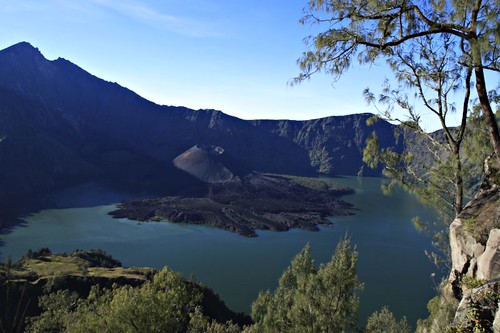As the tropical monsoon clouds roll in, obscuring the towering volcanos along the Bali coastline, the pristine neighboring island of Lombok seems a world away from Indonesia's premier tourist destination.
In fact, it almost is.
This unique isle lays to the east of one of the sharpest fissures in nature, the so-called Wallace Line that cuts through the Indonesian archipelago and divides the flora and fauna of Asia and that of Australia, Papua, New Zealand and other Pacific islands.
Recent developments on the island have seen an increase in accommodations of an international standard, such as the Oberoi, the Sheraton Sengiggi, the Holiday Inn and the Novotel hotels. Officials say the lack of air links has been the main factor hampering tourist growth. ''If they could only get direct flights from places like Perth and Kuala Lumpur, Lombok could position itself as the second beach resort in Indonesia,'' Kaul said.
Singapore's Silk Air operates the only international flight to the island. There are also daily flights from Bali, which is just a half-hour away by air.
In contrast to Bali's tourist hustle and bustle, Lombok offers a view of the old Indonesia, with its dense forests, traditional thatched villages, empty beaches and bygone transport - the ubiquitous ''dokar'' carts pulled by sturdy Sumbawan ponies.
Source: The Register Guard
Mount Rinjani is an active volcano in Indonesia on the island of Lombok. It rises to 3,726 m, making it the second highest volcano in Indonesia. The first historical eruption occurred in September of 1847. The most recent eruption of Mount Rinjani was on 1 October 2004. The 6 km by 8.5 km oval-shaped caldera is filled partially by a lake known as Segara Anak. The eruptions of 1994, 1995, and 1996 have formed a small cone in the center of the caldera and lava flows from these eruptions have entered the lake. (Photo and commentary by Kelly Cheng)
Label: Lombok

